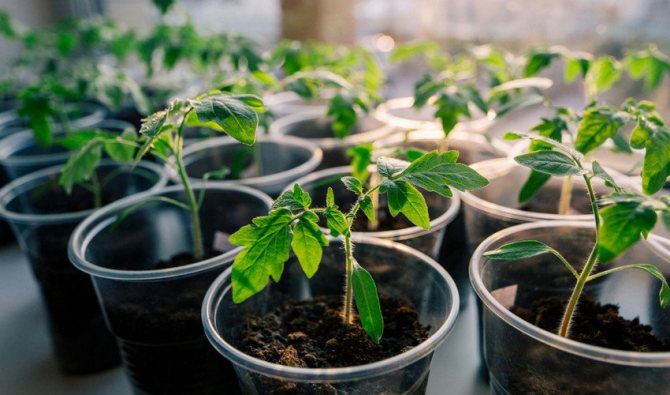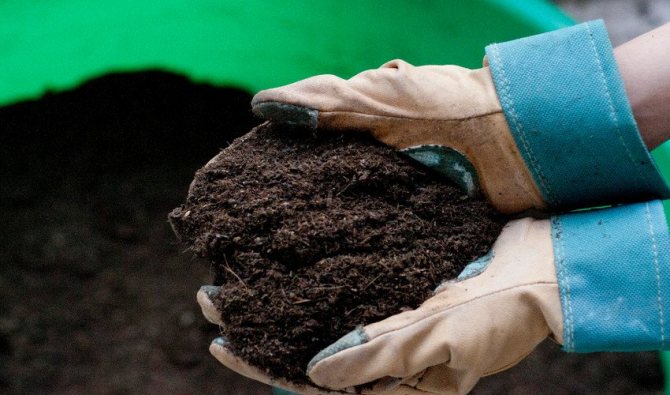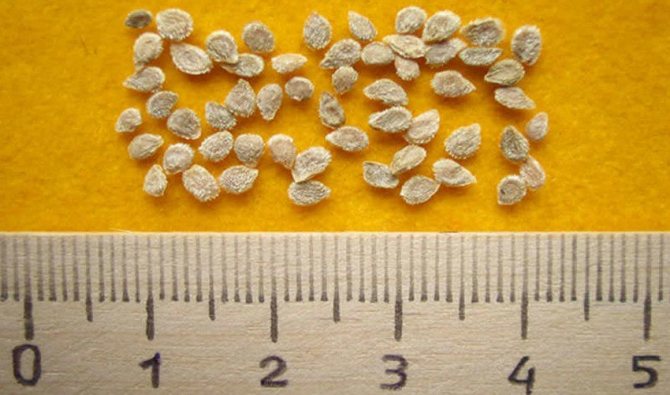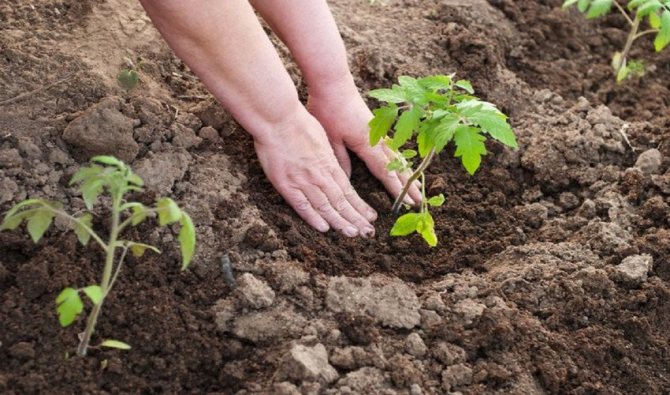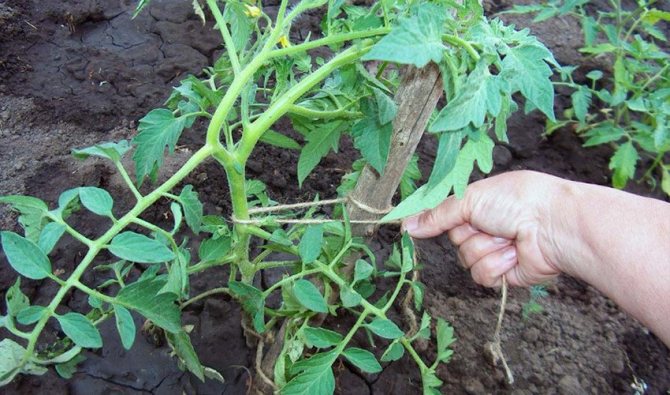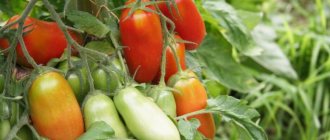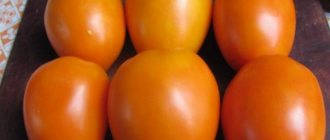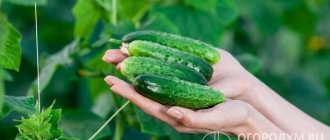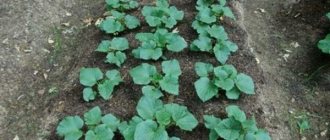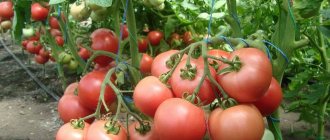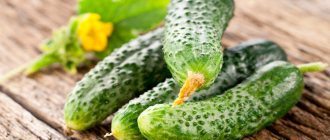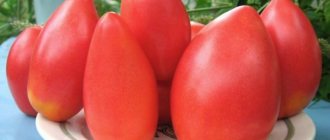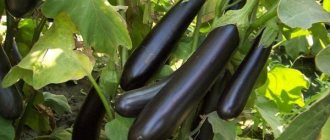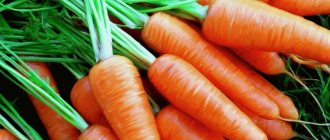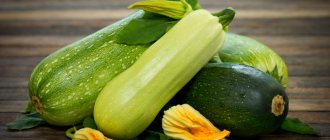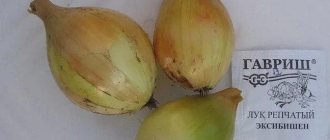With the onset of each new summer season, many gardeners begin to wonder which of the tomato varieties should be preferred. Some give preference to old, proven types, while others are not afraid to try new ones. The latter include tomatoes Tatiana F1.
general information
Tomato variety Tatyana is a hybrid bred by the Dutch company Seminis VegetableSeeds, bred specifically for growing in open field conditions. However, this fact does not mean at all that the culture does not grow well in greenhouses or hotbeds.
Tomato Tanya can be eaten both fresh and used for cooking, in particular, all kinds of vegetable salads. The culture is great for processing, salting, pickling and making tomato juices.
Tomatoes of this variety contain a large amount of vitamins (in particular, vitamin C), are transportable and are well kept fresh.
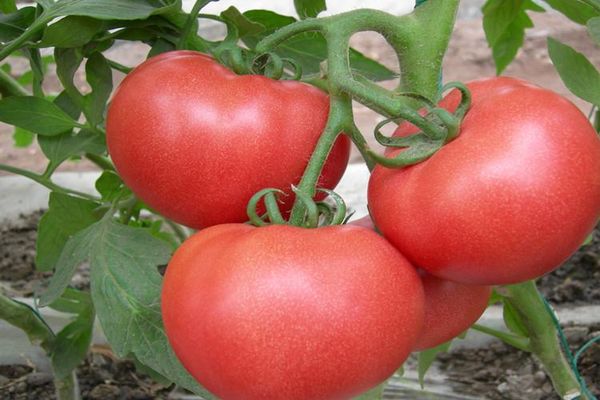
Tomato Tatiana
Tomato "Tanya" F1: variety description
| Variety name | Tanya |
| general description | Mid-season determinant hybrid |
| Originator | Holland |
| Ripening period | 110-120 days |
| The form | Rounded |
| Color | Red |
| Average weight of tomatoes | 150-170 grams |
| Application | Universal |
| Variety yield | 4.5-5.3 kg per square meter |
| Growing features | Standard agricultural technology |
| Disease resistance | Resistant to most diseases |
This variety is a hybrid bred in Holland by Seminis Vegetable Seeds for open field cultivation, but tomatoes grow well in greenhouses and greenhouses too. The variety is included in the Russian State Register for open field cultivation.
The type of bush in these tomatoes is determinant, up to 60 centimeters high, standard type, very branched... You can read about indeterminate plants here. The leaves are large, juicy, dark green. Variety "Tanya" F1 is universal, it can be grown throughout Russia, in areas where it is warm, it grows in open ground, and if the climate is more severe, then "Tanya" needs to be covered with a film.
IMPORTANT! This variety is resistant to such dangerous diseases as late blight, gray leaf blight, ASC - stem alternariosis, V - verticillium wilt.
The bush "Tanya" is very low, compact, occupies a small area, but the yield of the variety is high - 4.5-5.3 kilograms per square meter. Tomatoes "Tanya" do not require pinching, which greatly facilitates their care.
| Variety name | Yield |
| Tanya | 4.5-5.3 kg per square meter |
| Long Keeper | 4-6 kg per square meter |
| American ribbed | 5.5 per bush |
| De Barao Giant | 20-22 kg per bush |
| King of the market | 10-12 kg per square meter |
| Kostroma | 4.5-5 kg per bush |
| Summer resident | 4 kg per bush |
| Honey Heart | 8.5 kg per square meter |
| Banana Red | 3 kg per bush |
| Golden Jubilee | 15-20 kg per square meter |
| Diva | 8 kg per bush |
The only drawback of the variety is the need to use supports for branches, densely strewn with fruits and tying up to avoid stem breakage.
Features of agricultural technology
Most often, Tatyana's tomato is grown by obtaining seedlings.
Seedling
Tomato Marmalade: characteristics and description of the variety
For seedlings, soil is needed, which is a mixture of humus and sod land in equal amounts.Acquisition of soil intended for vegetable crops is allowed.
Important! Seeds germinate best when planted in coconut or peat pots.
The soil should be heat treated two weeks before planting. To do this, place it in the oven for 15 minutes.
Seeds also require some processing. They will need to be placed in a solution of 100 ml of water and 1 g of salt per day.
Seeds are planted to a depth of no more than 1 cm with an interval of 2 cm. Fresh planting is sprinkled with soil, and then thoroughly watered.
Transfer to the greenhouse
You can transplant seedlings of the Tatiana tomato variety into the greenhouse about two months after the first shoots appear. By that time, the height of the growth reaches about 20 cm, has several full-fledged leaves and a sufficiently developed root system.
A glass or polycarbonate greenhouse is best suited for a tomato. It is important to dig up the soil under the plant in the fall and remove the topsoil. The latter action will significantly reduce the likelihood of developing most diseases and the spread of harmful insects.
The soil must be fertilized with compost, superphosphate, and potassium sulphide.
Important! Mineral fertilizers should be applied at the rate of no more than 20 g per sq. m.
Planting in the greenhouse is carried out at a depth of 20 cm.The distance between the rows should be about 0.7 m, and between the plants - 0.5 m.
Open ground transplant
Tanya tomatoes, in accordance with the description, should be planted in a well-lit and well-protected area from the winds. Planting in open ground should be started after the spring frosts have ended. The soil is prepared in the fall: it is dug up and fertilized with humus.
Planting is carried out in shallow holes (15-20 cm) with an interval between plants of 40 cm. After planting, the seedlings are covered with soil, slightly compacted and thoroughly watered.


Open ground transplant
Care
In leaving, the Tatiana variety is rather unpretentious. To get a decent yield, it is enough to regularly water and periodically feed the plant.
To increase the resistance index, the culture is tied to a support.
Watering the plant requires moderate. With a lack of moisture in the culture, the leaves begin to curl strongly and the ovaries fall off. Tatyana causes no less harm to tomatoes. In this case, the plant begins to slow down its growth, and fungal diseases begin to actively develop on it.
3-5 liters of water is usually enough for a bush. You need to water the variety 1-2 times a week. This should be done early in the morning or in the evening after sunset.
Important!Top dressing for tomatoes Tatiana is required almost weekly. Phosphorus and potash fertilizers are best suited for the crop. The former contribute to the development of plants, accelerate their metabolism, and also increase immunity. The latter improve the taste characteristics of the fruit.
From folk methods of feeding, you can use ordinary ash. It is added directly under the plants. Alternatively, it is allowed to use the infusion for watering. To prepare the composition, you will need 2 kg of ash in a 10-liter bucket of hot water. The mixture is infused for a day.
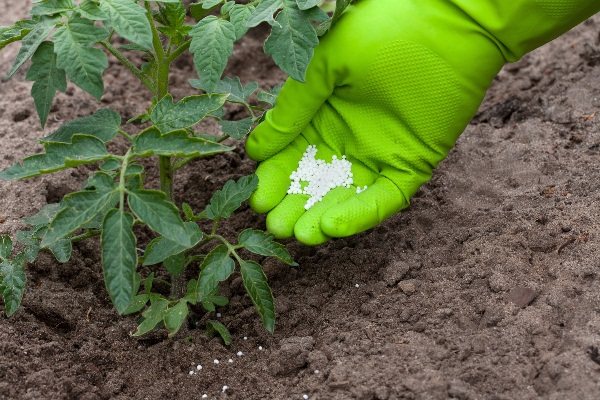

Top dressing of tomato
Despite the short stature of the bush, Tanya tomatoes require a garter and support. This allows the stem to remain straight and the fruit not to sink to the ground. In addition to the above, after the garter, the plant becomes much easier to care for.
For the garter, wooden or steel supports are usually used. For extensive plantings, it is allowed to use trellis with stretched wire at a height of 50 cm.
Characteristics
Tomatoes of the Dutch hybrid "Tanya" are distinguished by abundant fruiting and excellent productivity.The fruits are not too large, weighing on average 150-170 grams, bright red, rounded, dense and strong. There are 4-5 pieces on the brush. The first inflorescence is formed above 6-7 leaves, and the next ones - every 1-2 leaves. Fruits are rich in vitamins, especially vitamin C, contain a lot of sugar and dry matter.
You can compare the weight of the fruits of this variety with others in the table below:
| Variety name | Fruit weight |
| Tanya | 150-170 grams |
| Golden Stream | 80 gram |
| Salting miracle | 90 grams |
| Locomotive | 120-150 grams |
| President 2 | 300 grams |
| Leopold | 80-100 grams |
| Katyusha | 120-150 grams |
| Aphrodite F1 | 90-110 grams |
| Aurora F1 | 100-140 grams |
| Anyuta F1 | 95-120 grams |
| Boney M | 75-100 |
Tomatoes are light, transportable, they are kept fresh for a long time... Tomatoes "Tanya" at the stage of green technical ripeness do not have a green spot at the stalk. This is the main distinguishing feature of the variety.
Tanya tomatoes will satisfy any culinary need. Due to the fact that the fruits are not large and dense, they are good and fresh, and in a variety of vegetable salads, suitable for processing, for making tomato juices and pasta, they are very good in salted and pickled form.
Read also on our website: How to get an excellent harvest of tomatoes in the open field? How to grow delicious tomatoes in a greenhouse all year round? Why does a gardener need fungicides and insecticides? Which tomatoes have not only high immunity, but also good yields?
Dutch Breeders Tips
Some secrets of the Dutch tomato cultivation technology for a high yield:
- drainage is laid at the bottom of the box for sowing seeds, moist mineral soil is on top, seeds are sown, which are sprinkled with vermiculite with sand;
- mineral wool is used for rooting seedlings so that pests do not start;
- insects must be attracted to the greenhouse for pollination;
- for the growth of healthy and strong bushes, it is important to remove excess growth and ovaries in time;
- seedlings are comprehensively fed with special fertilizers with the necessary elements;
- according to Dutch technology, during the day, the air temperature should be constant about + 17-18 degrees, the air humidity should be at least 65%;
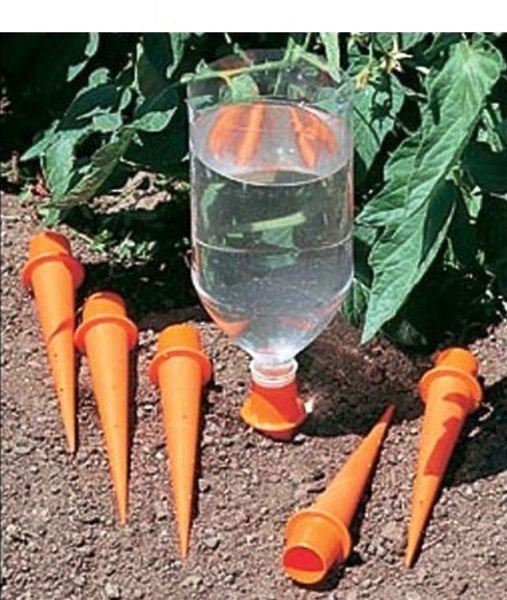

DIY drip irrigation device
- watering is carried out by the drip method;
- the harvest is removed in the morning every day;
- for quick ripening of late fruits, ethylene is applied to the plant trunk, the bush is wrapped in a film.
Due to its high productivity, good taste and minimal care requirements, the Dutch hybrid Tanya F1 is becoming more in demand among domestic gardeners.
Growing recommendations
It is not difficult to grow Tanya tomatoes if you follow the basic rules of caring for them. When grown in a greenhouse, frequent ventilation is necessary, since the air there is oversaturated with moisture. In open ground, tomatoes should be planted in open, sunny areas; in case of a sharp cold snap at night, it is imperative to use a covering material. Watering tomatoes requires abundant, but not frequent, on average once every 5-7 days.
It is very important to use the correct soil for both seedlings and mature plants in greenhouses. We will tell you about what types of soil for tomatoes exist, how to prepare the right soil yourself and how to prepare the soil in a greenhouse in spring for planting.
Do not forget about such agrotechnical techniques when planting tomatoes as loosening, mulching, feeding.
Read useful articles about fertilizers for tomatoes:
- Organic, mineral, phosphorus, complex and ready-made fertilizers, for seedlings and TOP of the best.
- Yeast, iodine, ammonia, hydrogen peroxide, ash, boric acid.
- What is foliar dressing and when picking, how to carry it out.
Tomatoes are harvested in varying degrees of ripeness and depends on the nature of use. In the non-chernozem zone, the fruits must be removed selectively when they become yellow-brown in color.The tomatoes collected in this way will ripen in 2-3 days. At a temperature of plus 12 degrees and below, the fruits should be picked green to prevent disease and decay.
Bush care
The basic rules for caring for plants are as follows:
- Regular watering with settled soft water;
- Loosening the soil on the site;
- Mulching the beds with peat, straw or humus;
- Removing weeds;
- Top dressing 3-4 times per season with complex mineral fertilizers and organic matter.
There is no need to tie up tomato bushes and tie them up. Experienced growers recommend removing the lower leaves to improve air exchange.
Diseases and pests
Since the "Tanya" variety is resistant to the most dangerous diseases of tomatoes, preventive measures are needed, spraying with "Profit", "Oksikhom" preparations, infusion of onion and garlic husks with the addition of potassium permanganate. If, nevertheless, your tomatoes are sick, spraying with the preparation "Fitosporin" gives a very good effect.
The main diseases affecting tomatoes in greenhouses and measures to combat them:
- Alternaria, fusarium, verticillosis.
- Late blight, methods of protection against late blight, varieties that do not suffer from this disease.
In addition to diseases, planting tomatoes can be damaged by insects and other pests.
The main pests for tomatoes and how to deal with them:
- Colorado beetles, their larvae, methods of disposal.
- What is aphid and how to get rid of it in the garden.
- Slugs and the most effective ways to deal with them.
- Thrips, spider mites. How to prevent the appearance of landings.
We hope that "Tanya" F1 will delight summer residents with a high yield of its fruits, very tasty and juicy!
How to grow seedlings
Sowing seeds begins 2 months before planting seedlings in the ground. Pre-prepare the soil, consisting of an equal amount of sod land and humus. The prepared soil must be disinfected with boiling water or by roasting in the oven for 10 minutes. After cultivation, the soil is poured into planting containers. It can be planted both in common wooden boxes and in individual containers: plastic glasses or peat pots.
Before sowing, the seeds, like the soil, are treated with disinfecting solutions. The easiest and most affordable option is saline solution. 1 g of salt is diluted in 100 ml of water and grains are placed in it for 1 day.
The seeds are laid to a depth of 1 cm, the distance between them is 2 cm. Then they are covered with a small amount of soil and moistened with warm settled water using a spray bottle. The containers are covered with foil and left in a dark and warm room at a temperature of 25 degrees.
After 3-4 days, the first shoots appear, after which the film is removed and the containers are rearranged in a lighted place. Daylight hours for seedlings should be at least 12 hours. If necessary, additional lighting is illuminated with phytolamps.
Water the seedlings as the top layer of the soil dries up. For irrigation, use warm, settled water, which moisten the edges of the nursery with tablespoons or a shallow watering can.
A pick is carried out when 2-3 true leaves appear. If the seedlings were planted in a common box, then during the pick they are seated in separate containers.
2 weeks before transplanting into the ground, the seedlings begin to harden. To do this, the planting containers are taken out into the street and left for 2-3 hours, gradually increasing this interval to 16 hours. In parallel with daytime hardening, the temperature in the room where the seedlings are located at night is reduced to 13 degrees.
Useful video
We invite you to familiarize yourself with the features of growing undersized determinant tomatoes in the video. These tips are perfect for growing tomato varieties "Tanya" F1:
https://youtu.be/ZlbUQ_5M_hc
| Early ripe | Mid late | Medium early |
| Raspberry Viscount | Yellow banana | Pink Bush F1 |
| The Tsar Bell | Titanium | Flamingo |
| Katya | F1 slot | Openwork |
| Valentine | Honey fireworks | Chio Chio San |
| Cranberries in sugar | Market miracle | Supermodel |
| Fatima | gold fish | Budenovka |
| Verlioka | De Barao black | Major F1 |
If you find an error, please select a piece of text and press Ctrl + Enter.

